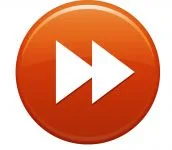For companies selling mobile, large display, virtual reality or augmented reality platforms using 3D, it is important to know the value-added benefits of their products in education. To date, most reports about the effectiveness of using stereo 3D in the classroom revolve around increased retention of learning, ‘wow’ factor, motivation to learn and higher pre-test/post-test scores. What if there is another benefit we are missing entirely? What if there is an advantage that may be much more appealing to educational customers?

Another advantage of teaching with 3D, based on learning experiences in Swedish schools, appears to be the acceleration of curriculum. Curriculum acceleration is moving students ahead faster, toward more advanced learning. This is the opposite of curriculum compaction, which involves somehow fitting more curriculum into less time and space. Both are desirable in school settings, but the growth dividend associated with the acceleration of curriculum seems more attractive. Here’s how it’s evidenced in some Swedish schools.
Using the 3D Classroom, a richly 3D simulation series produced by Sensavis, teachers in Sweden are seeing some surprising results, even at very young ages. At the intermediate school level, Principal Mattias Bostrom reported the following example of curriculum acceleration in action:
An 8th grade biology teacher using The 3D Classroom stopped having tests in anatomy at the end of a course. Instead he had the 8th grade students teaching what they had learned to 4th and 5th grade students, but using the same 3D visualization tools. This way he could better understand the depth of the 8th grade students’ knowledge. During the experiment, the instructor noticed that the 4th and 5th grade students asked tougher questions than he had imagined they would ask. The biology teacher, curious about what the younger students had learned, conducted another spot experiment. He took the last year’s final test for 8th grade anatomy and gave it to the 5th graders. He was surprised and delighted when the 5th graders scored better on this test than last year’s 8th graders. Humorously, at the same time he was a bit worried what to teach the 4th and 5th graders when they became 8th graders.
This, dear reader, is accelerated curriculum in action. It begs the question: can 3D visualization help even younger children learn more advanced topics, more thoroughly?
The answer is “Yes.” Here’s another compelling story, told by teacher Sofia Kruth at Sandhultskolan, evidencing how a teacher approached curriculum acceleration to teach photosynthesis at a much lower grade level than is the norm— in first grade:
We started our school year (year 1) by planting seeds to see the growth. We went outdoors to look at trees and plants and how they change throughout seasons. Our curriculum for the younger years entails changes in seasons, along with simple lifecycles of plants and animals. One day in autumn a pupil in one of the upper classes found parts of a deer in the woods. We took care of it, processed the parts, and looked at them in class – we found a hip, upper hind leg, and bits of the backbone. The younger pupils wanted to be part of those discoveries, too. I allowed my younger pupils to examine the skeleton parts and after that we went to watch the human skeleton in 3D. My pupils were fascinated with the human skeleton and drew conclusions about the thorax movements as the person breathes. With these positive remarks, and the attention and curiosity that my young pupils showed, it made me think about other areas in for using 3D visualization.
In the Swedish curriculum the photosynthesis is mentioned for year 4-6, nothing in the earlier years. With my positive experience with the 3D-Classroom in studying the skeleton, I thought: “Why not? I will challenge my pupils and let them deepen their understanding of plants, carbon dioxide, oxygen and their correlation—and if it doesn’t work I will know that they are not ready.”
Said and done. We took the time to set up the 3D-Classroom and clicked through the menus together. My pupils were fascinated with the look of the leaf, the stomata and how the stomata open and close depending on access to light. We followed the cell and saw the “factory” inside, how everything moved while light and stopped when dark; we saw the “explosion” inside the leaf as carbon dioxide molecules met the water molecules and through solar energy created new substances in a chemical reaction; we saw the carbohydrates the plant used and the oxygen that is released into the air for us to breathe.
The 3D captured my pupils’ curiosity, but also helped them see and think beyond their normal capacity. One student spontaneously remarked “What luck there is daytime on the other side of the globe when we have night, otherwise there wouldn’t be any more oxygen.” This pupil made correct assumptions and connections that included the earth’s axis and earth movements around its own axis and the sun with the chemical reaction inside a leaf. Rather complex thoughts and revelations from this young pupil (7 years old). The entire class drew complex schemata of how the photosynthesis works, schemata that entail the stomata, water molecules, carbon dioxide molecules, and the importance of light.
How does this all work? It’s no surprise. It’s the power of visualization in learning. Sofia Kruth observed:
In my view it is simply outstanding, I have never before seen or experienced this level of complexity when children this young talk and explain the process of making oxygen. If given a chance they can perform on a much higher level then given levels in the curriculum.”
Even the U.S. National Science Foundation National Institutes of Health note in their seminal report, calling for more visualization tool development: “Visualization plays a role in saving lives, accelerating discovery, and promoting education through improved understanding.”
– Len Scrogan

